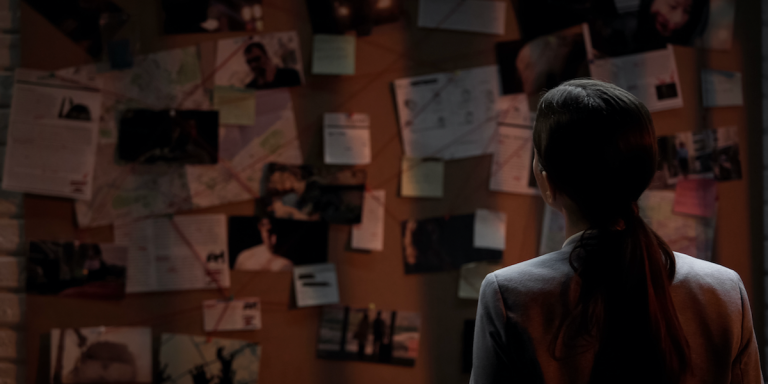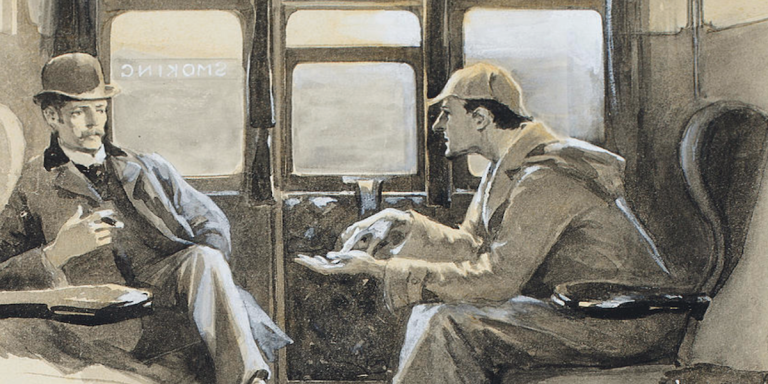A Brief History of Detective Fiction

Detective fiction is one of the most popular literary genres, and has been for centuries, but where did the genre come from? Why did mystery, suspense, and crime fiction become such a huge part of literature and popular culture? And how has the detective genre changed in the past 200+ years?
Detective fiction can be traced back to the 1800s, around the time of the Industrial Revolution. Before this time, most people lived in smaller towns and worked and socialized in closer circles, so people knew everyone they came into contact with for the most part. But with the rise of industrial jobs, more people began moving to cities, which lead to interacting with more strangers on a daily basis, a heightened sense of suspicion and uncertainty, and yes, more crime. It was around this time too where police forces were first established. London’s police force came to be in 1829, and New York City got its police force in 1845. With more people living in cities and crime rates on the rise, the setting was right for detective genres to flourish.
The first modern detective story is often thought to be Edgar Allan Poe’s The Murders in the Rue Morgue, a short story published in 1841 that introduced the world to private detective Monsieur C. Auguste Dupin. In fact, detective fiction was so new when Dupin entered the literary world that the word “detective” hadn’t even been used in English before.

The first detective novel followed soon after with British author Wilkie Collins’s The Moonstone. The story was first serialized in Charles Dickens’s journal All the Year Round. And in 1868, it was released as a complete novel. This novel is significant not just because it’s the first detective novel, but also because it established many of the classic tropes and attributes of the detective novel. The Moonstone‘s detective character Sergeant Cuff was based on the real-life detective Inspector Jonathan Whicher, one of the first ever detectives of Scotland Yard.
The detective character who really shaped the way we see literary detectives to this day, however, is probably someone you’ve guessed already: Sherlock Holmes. Not only is he the most famous detective character to ever be written, Sherlock Holmes is one of the most popular characters in fiction ever. Holmes was inspired in part on Poe’s detective Dupin, but he was also based on a real man: Dr. Joseph Bell. Bell was a surgeon and lecturer at the University of Edinburgh. Sherlock Holmes author Sir Arthur Conan Doyle met Dr. Bell in 1877, and Doyle has said he modeled Holmes’s quick wit and intelligence off of Bell. The first Sherlock Holmes novel, A Study in Scarlet came out in 1887, and Doyle continued to write Sherlock Holmes novels and short stories until around 1927.
1920 to 1939 came to be known as the Golden Age of Detective Fiction. And the queen of his age was Agatha Christie. During her lifetime, Agatha Christie wrote sixty-six detective novels and fourteen short story collections. Her novel And Then There Were None remains one of the best-selling books of all time, and as of 2018, the Guinness World Records listed Christie as the best-selling fiction writer of all time. Christie is responsible for creating not one but two of the most famous detectives in literary history: Hercule Poirot and Miss Marple. These detective characters remain highly influential to contemporary crime fiction writers.
Christie and other authors from the Golden Age of Detective Fiction have created a legacy of detective novels based on gathering clues and solving crimes as if they were puzzles the reader can solve with the detective. In contemporary literature, this style has evolved into what we now call cozy mysteries.
In response to the Golden Age authors, some American writers began to examine and reconsider the formula for detective fiction. Many people started to think of puzzle-solving crime fiction as too unrealistic and too clean. These authors and their readers were looking for crime novels that were more based in reality and the way real crimes happen. And so the hardboiled detective genre was born. These stories included detectives that were dealing with corrupt cops and organized crime. Hardboiled crime novels create a world where it’s every man for himself, and the detective can trust no one.

While hardboiled detective fiction emerged as early as the 1920s, the detective genre really took off in America in the 1930s-1950s. One of the most popular hardboiled detective novels from this period is Raymond Chandler’s The Big Sleep, the novel that introduced readers to the detective Philip Marlowe. This character would go on to feature in many of Chandler’s short stories and novels. And you’ll find many film adaptations featuring this hardboiled detective as well.
That leads us to where we are today with fictional detectives in contemporary crime fiction. Now, mystery and suspense fiction is more popular than ever. What that means is that there is room for many types of detective genres answering to readers’ specific tastes and interests. If you’re looking for supernatural detective stories, they’re out there. If you enjoy the realism and grittiness of the hardboiled detective genre, it’s still out there. If you want to revisit familiar and beloved detective characters, there are plenty of newer adaptations of classic detectives. For instance, give Sherry Thomas’s Lady Sherlock series a try. It really is a great time to be a mystery reader.
By clicking 'Sign Up,' I acknowledge that I have read and agree to Hachette Book Group’s Privacy Policy and Terms of Use
What to Read Next


